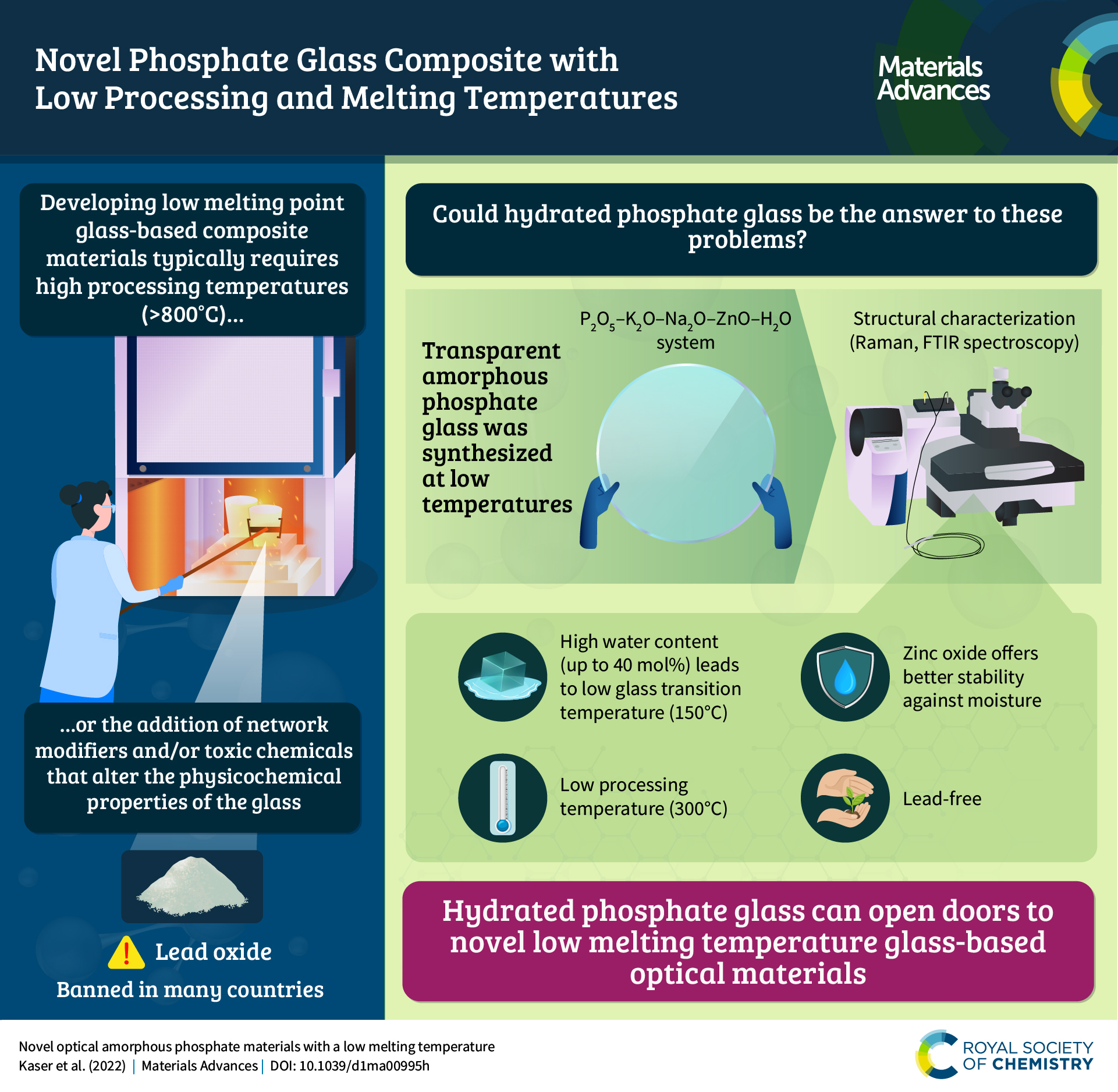An infographic highlighting a new hydrated phosphate glass composite
Novel optical amorphous phosphate materials with a low melting temperature
Simon Kaser, Théo Guérineau, Clément Strutynski, Reda Zaki, Marc Dussauze, Etienne Durand, Sandra H. Messaddeq, Sylvain Danto, Younès Messaddeq and Thierry Cardinal
Mater. Adv., 2022, 3, 4600-4607, DOI: 10.1039/D1MA00995H
Meet the authors
(a) What aspect of your work are you most excited about at the moment and what do you find most challenging about your research?
I like the fact that my research focuses on relatively unexplored but rapidly expanding fields, such as glass 3D-printing. Not having much information on the subject from the literature and not knowing what is worth pursuing or not can be frustrating, but the satisfaction that comes from finally finding results makes all these efforts worthwhile.
b. Why did you choose Materials Advances as a place to publish research on this topic?
It feels important to me that any research work is available to the broadest audience, which is possible thanks to Open Access journals such as Materials Advances.
c. Can you share one piece of career-related advice or wisdom with other early career scientists?
Do not be afraid to ask for help from senior researchers, their expertise and experience can only be beneficial to your own work.












